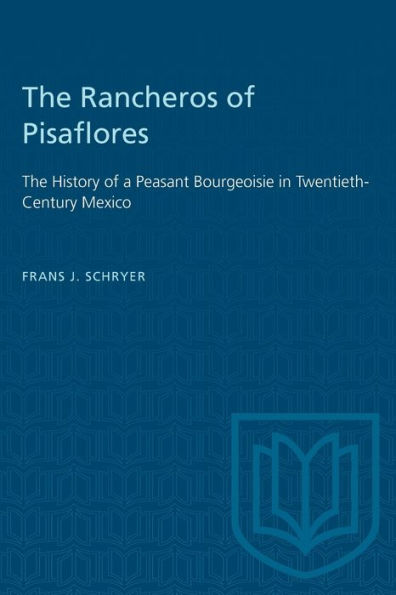This 'peasant bourgeoisie' far outnumbered the absentee owners of a huge hacienda who figure so prominently in the literature, and they played an important part in the armed phase of the Mexican Revolution that started in 1910. The Revolution, in fact, provided individual members of this rural class with a unique opportunity to improve their economic and social position. In the Sierra Alta de Hidalgo many rancheros became local revolutionaries, recruiting their own employees and tenants, and two members of prominent ranchero families eventually became governors of central states.
A detailed political history of Pisaflores between 1920 and 1970 shows how the rancheros responded to the larger economic changes in twentieth-century Mexico. The author suggests that the political behaviour of the peasant bourgeoisie was a logical outcome of the pattern of land tenure and its corresponding class structure. The book as a whole provides new insights into the operation of the de facto one-party system of Mexico, the use of an agrarian ideology, the operation of land reform, and the changing network of links between local, regional, and national politicians in this remote but not insignificant rural region.
This 'peasant bourgeoisie' far outnumbered the absentee owners of a huge hacienda who figure so prominently in the literature, and they played an important part in the armed phase of the Mexican Revolution that started in 1910. The Revolution, in fact, provided individual members of this rural class with a unique opportunity to improve their economic and social position. In the Sierra Alta de Hidalgo many rancheros became local revolutionaries, recruiting their own employees and tenants, and two members of prominent ranchero families eventually became governors of central states.
A detailed political history of Pisaflores between 1920 and 1970 shows how the rancheros responded to the larger economic changes in twentieth-century Mexico. The author suggests that the political behaviour of the peasant bourgeoisie was a logical outcome of the pattern of land tenure and its corresponding class structure. The book as a whole provides new insights into the operation of the de facto one-party system of Mexico, the use of an agrarian ideology, the operation of land reform, and the changing network of links between local, regional, and national politicians in this remote but not insignificant rural region.

The Rancheros of Pisaflores: The History of a Peasant Bourgeoisie in Twentieth-Century Mexico
228
The Rancheros of Pisaflores: The History of a Peasant Bourgeoisie in Twentieth-Century Mexico
228Paperback

Product Details
| ISBN-13: | 9781487580896 |
|---|---|
| Publisher: | University of Toronto Press |
| Publication date: | 12/15/1980 |
| Series: | Heritage |
| Pages: | 228 |
| Product dimensions: | 6.14(w) x 9.21(h) x 0.52(d) |
